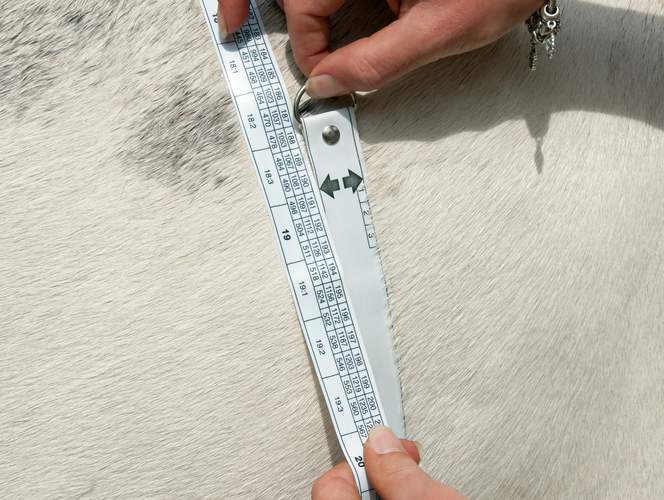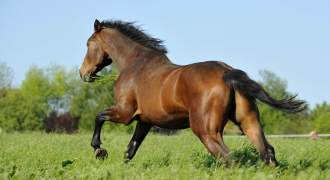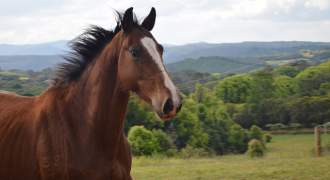
How to measure your horse’s respiratory rate
What should your horse's respiratory rate be? Your horse’s resting breathing rate should be around 8-12 breaths per minute
05 May 2018
Read More
Knowing your horse’s ideal weight and being able to check it regularly to spot any loss or gain can help you keep an eye on potential health problems. There are several simple ways to do this.
Condition scoring
This involves assessing the amount of fat your horse is carrying, using sight and feel. If you do this every couple of weeks you will soon learn to quickly spot even the slightest weight changes.
How to do it
The five-point condition scoring scale classifies zero as emaciated and five as obese. A fit and healthy horse should be scored between two and three. Horses tend to store fat on their neck, shoulders, ribs, backbone, pelvis and at the top of the tail. Start by dividing your horse into three sections, study and feel each section and score accordingly and then divide your score by three to produce an average.
To make it easier you could ask a feed company or equine charity for a pictorial guide to condition scoring. Find out more here http://www.bhs.org.uk/~/media/bhs/files/pdf-documents/condition-scoring-leaflet.ashx?la=en
Weighbridge
The most accurate way to assess your horse’s weight is by using an equine-specific weighbridge. Some feed manufacturers or veterinary practices provide weigh sessions at yards or your veterinary clinic may have a weighbridge that you can access.
Weigh tape
This involves using a calibrated equine-specific weigh tape (which can be found in tack stores or via a feed company) to give an indication of the weight of your horse.
How to do it
Stand your horse squarely on a flat surface. Wrap the tape around the horse’s girth area, from the lowest point of the withers and directly behind the elbow. Gently tighten and overlap the ends to read the weight score. Although weigh tapes are not very precise, they are a great way to keep tabs on your horse’s weight. For absolute accuracy it is best to use a weighbridge.
Weight formula
The weight calculation formula is more accurate for adult horses than a weigh tape but less accurate than a weighbridge.
How to do it
Multiply heart girth measurement by heart girth measurement, then multiply this figure by your horse’s body length. Divide the resulting figure by 330 to give the weight of your horse in pounds. To convert the weight to kilograms divide the final number by 2.2. Find out more here https://www.bluecross.org.uk/pet-advice/how-check-weight-your-horse
What are vital signs?
The principal vital signs for horses are temperature, heart rate, respiratory rate and mucus membrane colour. Knowing the normal range of your horse’s vital signs and how to take them will help you to monitor his health and can give you an important early warning that something could be wrong. Being familiar with your horse’s normal weight is also important because changes may indicate ill health. Always call your vet immediately if any vital signs are not as expected.
Related Content:
How to assess the colour of your horse’s mucous membrane
References:

What should your horse's respiratory rate be? Your horse’s resting breathing rate should be around 8-12 breaths per minute
05 May 2018
Read More
Palpation of your horse's digital pulse in your horse’s lower leg can be useful to detect if there is inflammation in the feet,
06 April 2018
Read More
Wondering how to assess the colour of your horse’s mucous membranes? Your horse’s mucous membranes (gums) should be mo...
16 March 2018
Read More